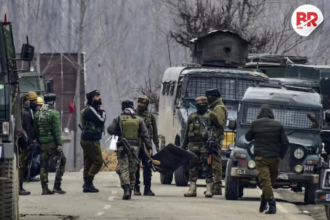
The monsoon has arrived in Kerala earlier than expected, according to the India Meteorological Department (IMD). This year’s arrival marks the earliest monsoon onset in India since 2009. It typically hits Kerala around June 1, but 2025’s arrival came a few days ahead—raising both hopes and questions.
So, what does this mean for the average Indian? In simple terms: the rains have shown up early. But don’t get your umbrellas out just yet—unless you’re in the path. The real question is whether this early arrival will turn into a steady and widespread monsoon that touches all corners of the country. Because in farming, like in life, timing is everything—but consistency is king.

Good News—With a Caution Label
Experts say this early monsoon could be a good sign if it spreads evenly to central and northern India by mid-July. That would help the Kharif season start strong, boost agricultural output, and possibly keep inflation in check.
But here’s the catch: if the rains stall or get patchy, farmers may struggle to sow crops like rice, maize, and pulses on time. That could ripple through the economy, from food prices at the local market to overall GDP growth.
It’s like being promised a concert and getting only the soundcheck.
Also Read Why Does Bengaluru Flood Every Time It Rains—Even at 3,000 Feet?
Rain Forecast: Who Gets Wet and Who Waits
The IMD has also predicted thunderstorms and rainfall in several parts of India. Areas likely to see rain include Delhi, Mumbai, Goa, and their surrounding regions. However, there’s been a slight twist—Mumbai’s alert level has been lowered from orange to yellow. That means only light to moderate rain is expected in the city.
Delhi, still shaking off the dust from a storm two days ago that killed two people, might see rainfall and thunder this Saturday. After weeks of scorching heat and air quality warnings, even a drizzle feels like a blessing.
Early monsoons often bring a sense of relief and hope. But if the rains fizzle out halfway, it’s not just farmers who’ll feel the heat. Food prices can spike, rural incomes can dip, and the whole economy might end up catching a cold.
Think of the monsoon as India’s yearly performance review—how it behaves over the next few weeks could make or break the season.
Also Read IMD Predicts Above-Normal Monsoon in 2025: What Could This Mean for India’s Future?












